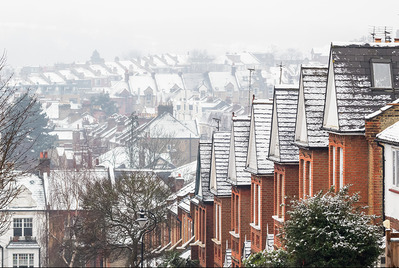 If you’ve never had to claim on your landlord insurance, you probably only think about it when it comes up for renewal each year. And if, like many landlords, you usually just let it renew automatically, you might be missing two things:
If you’ve never had to claim on your landlord insurance, you probably only think about it when it comes up for renewal each year. And if, like many landlords, you usually just let it renew automatically, you might be missing two things:
- Have you considered whether you need to make any changes to the level of cover?
- Are you aware of all your obligations under the terms of the policy? If not, you run the risk of your insurance being declared invalid because of something you’ve failed to do
So, now the summer has ended and we head into the time of year when your property’s more vulnerable to damage from the elements, here’s a summary of what’s available in the landlord insurance market and our advice on some key things you should be checking.
As ‘standard’, a landlord policy should include:
- Buildings insurance, which covers you for the full value of rebuilding the property if it were to be completely destroyed
- Accidental damage cover, in case someone in the property causes damage that wasn’t deliberate
- Public liability insurance, which should cover your costs if a tenant, contractor or visitor injures themselves in your property and chooses to pursue you for compensation
- Malicious damage insurance, in case your tenant deliberately destroys the fittings or fabric of the property
- Legal protection, to cover you for legal costs you might incur in relation to your buy to let, such as going to court, evicting a tenant or pursuing unpaid rent
Then there are additional cover items it’s worth considering adding to your policy:
- Rent protection insurance, which commonly covers you for up to 12 months if your tenant defaults
- Alternative accommodation, in case the property has been damaged to the extent that your tenants need to be re-homed while works are carried out
- Contents insurance, if the property is furnished
- Home emergency cover, which gives you access to approved tradesmen in the event of an emergency. It should also cover the cost of repairs up to a certain value – the one we offer is up to £500 with no excess
If you’ve got several properties, make sure you ask about portfolio insurance, where all your investments are on one policy. That makes it easier for you to administrate, with just one premium and one renewal date to remember, and you should also see a reduction in the cost per property.
Five things to check on your landlord insurance policy
- Is your rebuild valuation correct, or might you be underinsured? This could be an issue if you’ve been a landlord for a number of years and costs and materials have gone up in price, but you haven’t adjusted the rebuild value. You might think the risk of your property being completely destroyed is very low but you might not be aware that any amount you claim for on that policy will be reduced proportionally. For example: If the real rebuild value is £100,000 but you only insure the property for £50,000, any claim may be reduced by 50%, i.e. if a tenant caused £5,000 worth of damage, your insurer might only give you £2,500.
- How long can the property be left empty? Every insurance provider will state a maximum period that the property can be left unoccupied before the policy is either adversely affected or declared invalid. So check what this period is and if your buy to let is going to be empty for longer than that, make sure you inform your insurer. Most will offer some kind of ‘empty property’ insurance, but the premium will increase
- What checks do you need to make? Most landlord insurance policies have a minimum set of standards for referencing tenants and carrying out periodical inspections on the property. Make sure you know what these are and keep clear records of the checks you’ve made, in case you need to make a claim for damage to the property
- What are your obligations for keeping external drainage systems in a good state of repair? Even if your tenant is responsible for maintaining the exterior and garden of the property, under the terms of your insurance policy, it’s your responsibility as the landlord to keep the property free of potential hazards. At this time of year there’s a particularly high risk of drains and guttering getting blocked by leaves and twigs. That can lead to rainwater collecting and penetrating at the base of the property where it can’t drain away, and soaking in through the walls higher up where it’s overflowing from gutters
So check the ‘small print’ for your obligations and have a maintenance contractor clear the guttering and drains around the end of autumn, to make sure they’re in good shape for winter. File the invoice carefully so you can prove the work was undertaken
- Do you need a valid EICR? As the laws around health and safety continues to tighten up, more insurers are making it a condition of their policies that there’s a valid Electrical Installation Condition Report (EICR) for the property. That proves a qualified electrician has inspected the electrical system and equipment and is satisfied that they’re safe, i.e. there aren’t any electrical hazards that could put either the tenant or the building at risk. So check with your insurer (a) whether you’re required to have an inspection to secure a report and (b) how often that needs to be renewed.
Finally, as the deadline for submitting paper self-assessment tax returns approaches (31st October), remember that all your landlord insurance costs are tax deductible. They’re classed as business expenses and can be offset against your tax bill each year.
At Your Move, we have a range of very competitive insurance products that can be tailored to your needs. You can contact request a call back by contacting us here >
The Your Move Content Marketing Team



